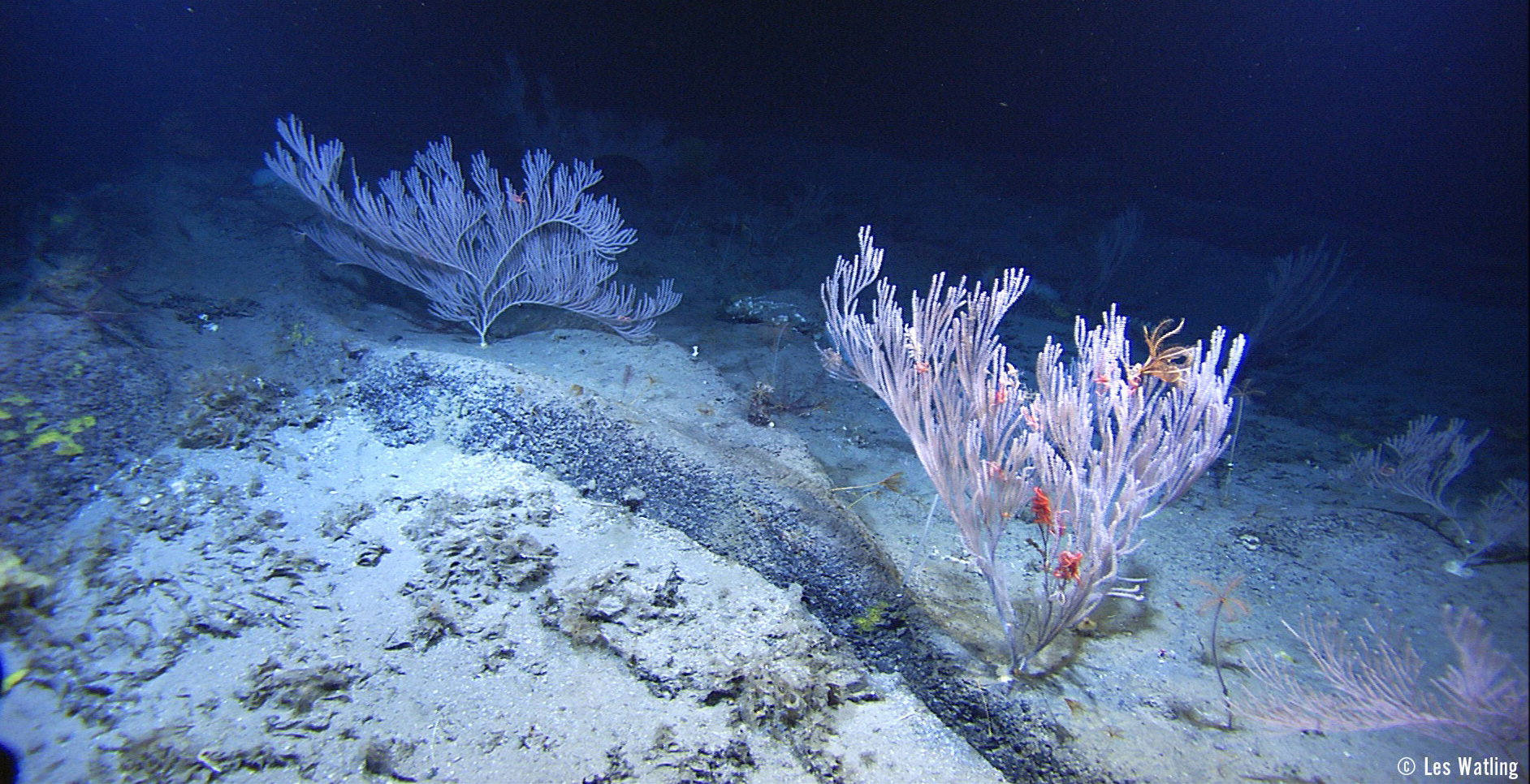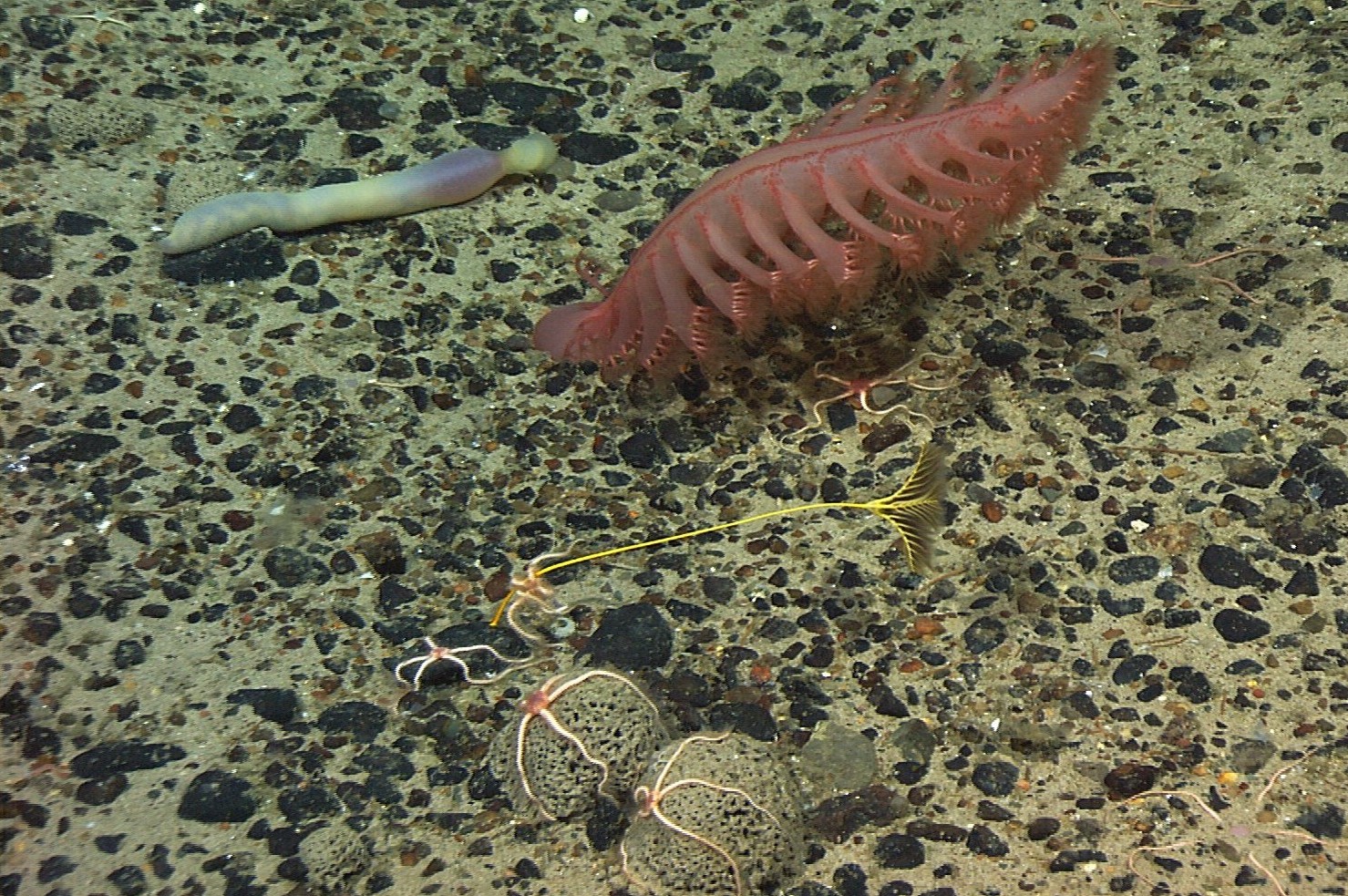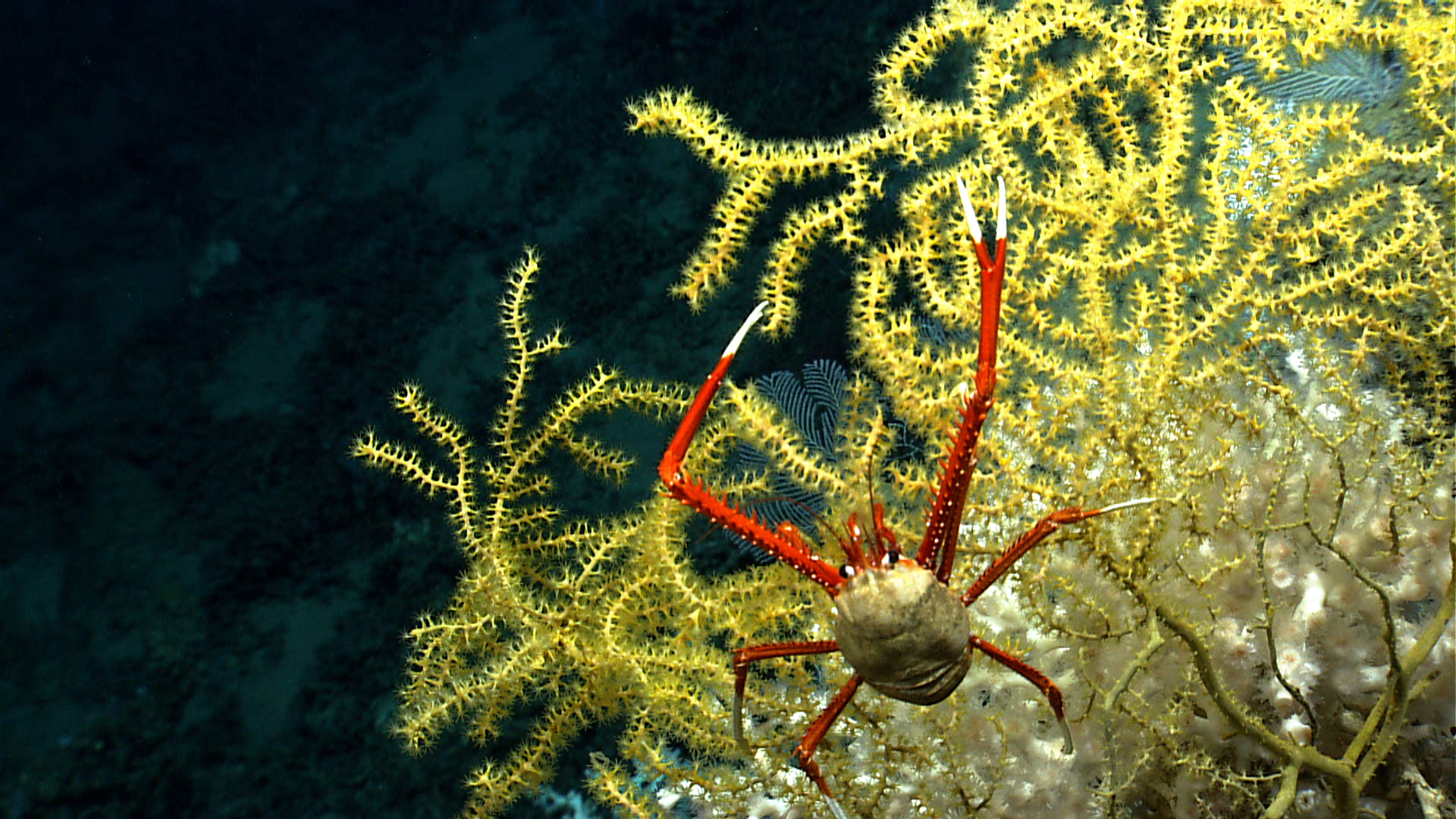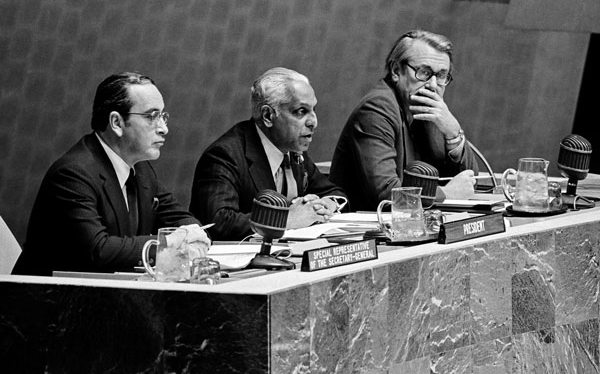From March 25th to April 5th, hundreds of delegates gathered at the United Nations headquarters in Manhattan to continue work on one of the most consequential ocean-based treaty negotiations in recent memory. It was the second of four planned intergovernmental conference sessions to establish a new, legally binding instrument for the conservation and sustainable use of biodiversity on the high seas, in areas beyond national jurisdiction.
Each morning, representatives entered the sweeping lobby, walked past displays promoting the lofty aspirations of global harmony, and descended into the subterranean linoleum halls, navigating toward conference room four. In the front of the room, state delegates took their dedicated seats, while observers, including the Deep Ocean Stewardship Initiative grabbed available seats behind them or in adjacent viewing rooms. Seated delegates placed ergonomically challenging white plastic speakers over their ears, dialed into their language of choice, and settled in for a long day of discussions.
No way around it: these negotiations were an alphabet soup of acronyms, and the four subject areas of the meeting made full use of the unwieldy lexicon. The first week covered marine genetic resources (MGRs), including questions on the sharing of benefits, and measures such as area-based management tools (ABMTs) including marine protected areas (MPAs). The second week focused on environmental impact assessments (EIAs) and capacity building and the transfer of marine technology (CB/TT).
In contrast to the first conference session in September of last year, delegates could work from a 70-page aid to negotiations composed by Ambassador Rena Lee, the President of the IGC. This guidance document offered a nested list of options on each negotiating point that delegations could promote, contest, or seek to modify. Ms. Lee kept proceedings moving briskly, limiting interventions to those specifically targeting points in the document.
During discussions on marine genetic resources, most delegates agreed that benefits derived from the ocean’s genetic resources should be shared and that the treaty should build in cooperation, in some form. Less clear was how the use of the resources would be monitored and whether the instrument would apply to digital sequence information and/or derivatives (the molecules made by genes and gene products). The Deep-ocean Stewardship Initiative stressed the importance of involving the scientific community to establish clear, easily understood terms and to embed best practices – most notably open access, data standards, and an infrastructure for data-sharing – within the instrument’s requirements.
Delegates agreed on structural aspects of area-based management tools, including the incorporation of the best available science and traditional knowledge, the pathway of management tool proposals from States party to the agreement to an overseeing secretariat, and the desire to play well with other previously established regulatory entities. Content-based issues were more contentious. What will the requirements be for designating area-based management tools? What sort of institutional arrangements will adopt, oversee, and enforce effective area-based management tools? The Deep-ocean Stewardship Initiative team urged states to incorporate scientific expertise explicitly into the instrument’s framework for area-based management tools. Specifically, DOSI noted the ability of area-based management tools to buffer marine ecosystems in the face of climate change, to protect vertical ecological linkages between surface waters, the twilight zone, the deep sea, and the seabed, and, by adopting a precautionary approach, to account for major gaps in understanding how human activities affect deep sea ecosystems.
Broadly, delegates agreed on the need to conduct environmental impact assessments, but what their scope should be was less obvious: should all activities that influence the high seas – even those within national jurisdiction – be subject to preemptive assessment? Or should the instrument apply only to activities actually taking place beyond national jurisdiction?
The final working group, capacity building and the transfer of marine technology, highlighted the importance of technology and expertise in enabling all aspects of high seas activities. Most delegates agreed that the transfer of technologies and capacity efforts should be rooted in specific needs and actionable objectives. Whether transfer should be voluntary, how exchange would be funded, and how Parties would be designated as “donors” or “recipients” remained unclear. But most delegates favored enshrining principles of equity within the instrument to ensure that all states – not only those with the resources for high seas research and exploitation – should gain some access to the benefits of these activities.
The ten days of talks revealed fault lines and divisions that will need to be bridged. This progress will likely come next; delegates agreed that the next session should move past an outline of elements, onto a draft text, and they proposed moving toward smaller, less formal working groups that could better debate and haggle over specific provisions. Ms. Lee certainly has her work cut out for her as she moves to incorporate the sometimes-conflicting interventions into such a text, but, if delegates continue to come to the UN in a spirit of cooperation and collaboration, this labor will pay dividends for many decades to come.






